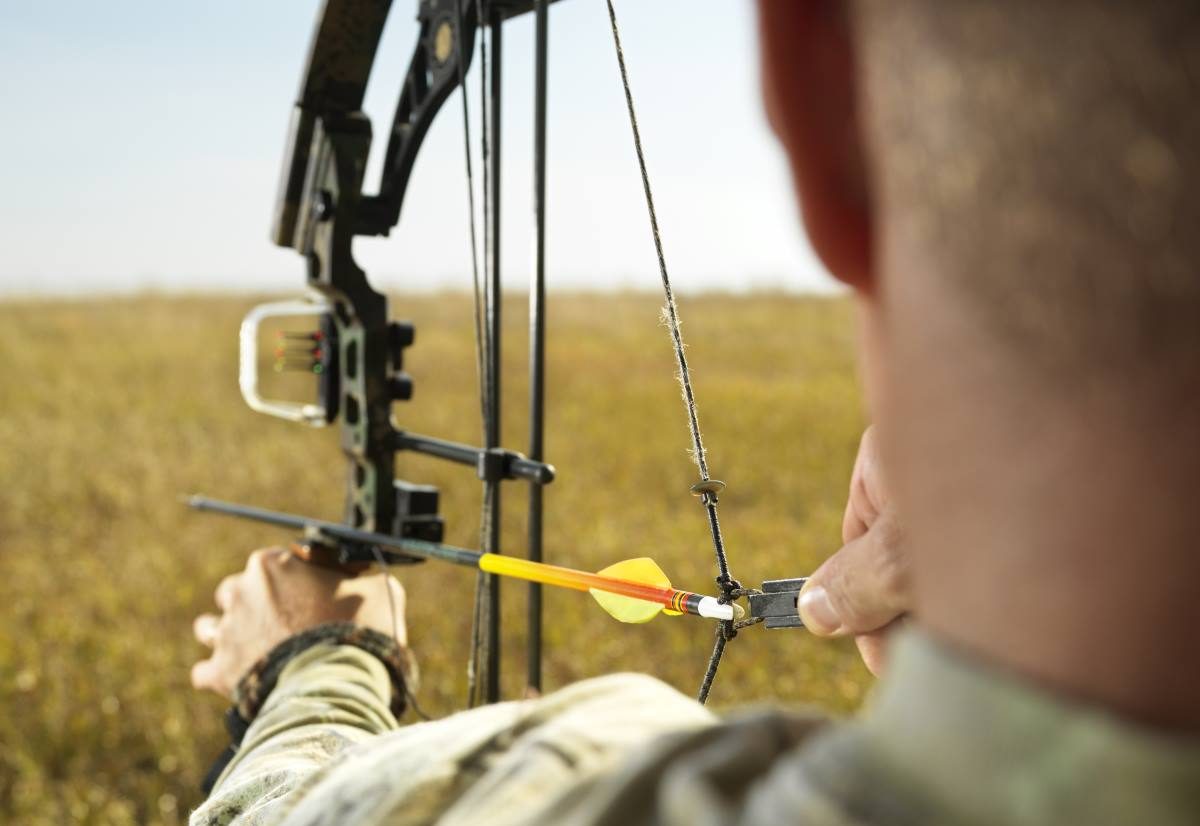Get Your Weapon Ready for Deer Season: Whitetails 365

Get Your Weapon Ready for Deer Season
With the season approaching, now is a great time to check your bow and ensure everything is in top shape.
While a full tune-up might not be needed annually, especially if your bow is performing well, it’s wise to inspect a few essential components. Please take a moment to examine your bowstring for any signs of wear, such as fraying, color fading, or dryness. Additionally, confirm that the serving around the string remains tightly wrapped.
Taking a few minutes for these checks can help maintain your equipment. Most importantly, ensure you’re consistently hitting your target. If your accuracy has decreased, it might be time to have your bow inspected by a professional.
Common Tuning Points
As we’ve discussed, bowstrings and cables are the first area to check. Make sure they’re properly waxed by thoroughly rubbing wax into the string and cables, being careful to avoid any clumps that could attract dirt. Look closely for any frays, nicks, fading, or excessive dryness. Pay particular attention to the serving; there should be no gaps exposing the string or cables, especially in the center serving. If you notice any of these issues, it’s best to consult with your local archery shop. Ignoring these small problems could lead to equipment failure, affecting both your accuracy and safety.
Furthermore, regular shooting can cause your bowstring to stretch, potentially impacting your accuracy and causing issues like peep rotation, serving separation, and cam timing. When you draw your bow to a solid anchor point, verify that your peep sight aligns correctly with your eye and your sight. If adjustments are needed, it’s best to have a trusted archery technician handle them. You’ll want to avoid any misalignment when drawing back on a target during the season.
Another area to check on your compound bow is your cams. When you draw it, look at your cams above and below to see how they appear under load. Ideally, they should be perpendicular to the ground and remain fairly straight even with the tension of the string. You can also check for cam lean by laying your undrawn bow down and placing a yardstick across the cams. If you notice any significant lean or uneven pull, it’s best to have a trusted archery technician adjust your cams. Another extremely important area with the cams are they need to be in time with each other. This is crucial for consistent accuracy and optimal arrow flight.
After checking your equipment, take some time to shoot a few arrows. While you might need minor sight adjustments, it’s a good opportunity to focus on your shooting and address any less-than-ideal habits that might have developed, especially if you haven’t shot much recently. Subtle flaws can easily creep into our technique over time. Identifying them is the first step towards improvement.
Also, remember that your shooting form significantly influences arrow flight. Pay attention to avoid anticipating the shot, abruptly punching the trigger, and try not to flinch as you shoot. I often record myself to self-diagnose any problems especially if my accuracy has fallen off.
If you don’t have the experience or knowledge to do so, there is no shame in taking a few archery lessons to ensure your form is optimal. Make sure to take a lesson from a reputable archery pro or coach. Getting help from someone who THINKS they know how to shoot can cause more harm than good. Consistent practice with proper technique helps build good habits and provides a solid foundation for accurate shots in the field. This preparation will also boost your confidence when it really counts. Ultimately, keeping your equipment in good shape and maintaining good form are key to being ready for those crucial moments when one shot can mean a successful season or a failure.
Arrow Set-Up
I wanted to share some thoughts on arrow setup for bowhunting, a topic that has seen some interesting shifts over the years.
It wasn’t long ago that the prevailing trend in archery was all about speed, with a focus on lighter arrows and achieving the highest possible IBO ratings. The advantage of this approach was a flatter trajectory, offering a bit more forgiveness when judging distances in the field. Even if your yardage estimation wasn’t perfect, the arrow’s flatter flight path could still lead to a successful shot.
More recently, there’s been a trend towards heavier arrows and broadheads, aiming for greater kinetic energy and penetration. While a heavier setup certainly delivers more energy, it’s important to recognize that trajectory becomes more pronounced. Misjudging the distance with a heavier arrow can result in a more significant drop, making accurate ranging crucial.
Despite the allure of very heavy setups, it’s worth noting that a 400-grain arrow is often sufficient for ethically harvesting most game in North America, including the large whitetails we have here in Iowa.
Regardless of your chosen arrow and broadhead combination, the absolute necessity is to practice extensively with that specific setup before heading out to hunt. Failing to do so introduces unnecessary risk to your season and, more importantly, to achieving a clean and ethical harvest. My years of experience in the archery business have shown me that different bows perform optimally with different arrows. This can even vary between individual bows of the same model, especially when customized for different shooters.
Ultimately, the key is to identify an arrow and broadhead set up that flies consistently and accurately for your bow and draw length. It also must have enough energy to make a clean ethical harvest from your comfortable range. So, if it’s shooting a 600-grain setup or a 330-grain set up its all-personal preference. Once you find it stick with it, “don’t ruin a good thing” because “the grass isn’t always greener.”
Broadhead Fixed & Expandable
I wanted to share some insights on selecting broadheads based on my experience running an archery pro shop. When it comes to fixed versus expandable broadheads, the reality is that both have their merits.
Fixed blade broadheads are known for their superior penetration, though they might require more effort to tune with your arrow setup. On the other hand, expandable broadheads typically offer better flight consistency but may compromise on penetration depth.
A common concern I’ve heard regarding expandable broadheads is their potential to deploy upon contact with brush or debris. However, ethically, you should always avoid taking shots through obstructions, rendering this concern irrelevant. Similarly, complaints about fixed blades not hitting the point of aim often stem from a lack of practice with those specific broadheads. It’s crucial to understand that fixed blades can have a different flight profile compared to field points, and discovering this during a hunt is far from ideal.
My main recommendation is to thoroughly practice with your chosen broadheads. Many manufacturers offer practice heads that closely mimic the flight of their hunting counterparts. If you’re unsure which type would be best for your setup, visiting a reputable archery shop and discussing your specific needs (draw length, draw weight, etc.) with knowledgeable staff is highly advisable. Generally, archers with shorter draw lengths or lower draw weights might benefit more from fixed blade broadheads to maximize penetration. Those with higher draw weights and longer draws could explore expandable options.
Ultimately, the key is to find a broadhead that performs well with your equipment and stick with it.
Keep The Mindset and Get Your Firearm Ready
With the weather more favorable now than winters freezing temperatures, it’s a perfect time to get your hunting firearms and optics sighted in for the upcoming deer seasons. It’s more enjoyable to do this when the temperatures aren’t giving you frostbite while at the range.
One benefit of using firearms is that the practice doesn’t need to be as intensive compared to archery. Once you’ve found the right ammunition and your firearm is properly sighted, maintaining your accuracy mainly involves checking your zero periodically. While more frequent practice can certainly improve your skills and range, the current cost of ammunition makes it practical for most of us to focus on ensuring our zero remains accurate with occasional checks, especially while the weather is good.
I would recommend shooting a box or two of shells at various distances to confirm everything is shooting accurately. Naturally, if you have the resources and enjoy regular shooting, that’s certainly advantageous. If you are having problems with your firearms performance or accuracy, make sure to get it into your favorite gunsmith. Having an archery pro shop I’ve always worked on my own bow and arrow set-up but when it comes to firearms we used Generational Guns in Bondurant, but there are many good smiths around our great state. So, find one that fits your needs. Keep in mind that it’s also a good idea to practice in colder weather as the season gets closer.
Conclusion
Remember that deer season is just around the corner! With August approaching, now is an excellent time to start getting mentally and physically prepared. I encourage everyone to dedicate some time in the mornings and evenings to practice shooting your bows and firearms. This is the perfect opportunity to identify any necessary adjustments to your equipment and then work on building your skill and confidence. It won’t be long before we see frost on our windshields as we head out on those crisp November mornings to our blinds, saddles, and treestands. Also, as the season progresses and the weather turns colder, remember that practicing in these conditions can be beneficial as well.
Looking forward to a successful season with all of you.
by Aaron McKinney
August 2025
Here are our other businesses check them out
Also check out this Article from the August 2025 issue as well
Here is Last Month’s Whitetails 365 enjoy!
Also here is the Digital Issue August 2025
Looking for our Cattle/Dairy side of things?


